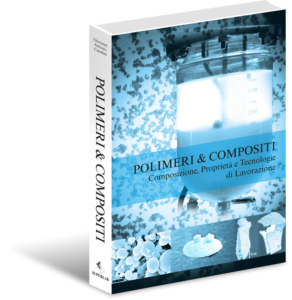SUPERLAB EQUIPMENT
DENSITY
DENSITY according to ISO 1183 – ASTM D 792
Density is an important element in the price factor and is used in design and manufacturing controls.
FLUIDITY INDEX (MFI/MVR)
according to ISO 1133 – ASTM D 1238 The test concerns the determination of the extrusion speed (fluidity) of melted thermoplastic polymers through a nozzle of specified length and diameter, under prescribed conditions of temperature, load and position of the piston in the plastometer cylinder at the time of withdrawal of the extrudate specific times.
VISCOSITY OF POLYESTER (PET, PBT, PC, PLA)
VISCOSITY OF POLYESTER (PET, PBT, PC, PA) according to ISO 1628 – ASTM D 4603 The measurement of the viscosity of polyesters is an indication referable to their molecular weight. The result can be expressed as Inherent Viscosity and/or Intrinsic Viscosity.
VISCOSITY OF POLYAMIDES
VISCOSITY OF POLYAMIDES (PA6, PA66, PA6/66, PA46, PPA) according to ISO 307
The measurement of the viscosity of Polyamides is an indication referable to their molecular weight.
The result can be expressed as Relative Viscosity and/or as Viscosity Number.
PVC VISCOSITY (GRADE K)
VISCOSITY OF PVC (K grade) according to ISO 1928.
The measurement of PVC viscosity is an indication referable to its molecular weight.
The result, expressed as Grade K, is derived from the Relative Viscosity.ASHES CONTENT
The measurement of the ashes content makes known the quantity of inhorganic material (mineral fillers, glass fibres, pigments etc.) contained in a given polymer.
CARBON BLACK CONTENT
CARBON BLACK CONTENT by TGA according to ISO 11358.
This important evaluation, which is generally carried out on polymers that do not contain other inert fillers, is fundamental both as a quality control of the production process of polymers with high % of carbon black (Masterbatches) and to evaluate the content in the products that must contain it , according to specific regulations, a well-defined quantity.
MOISTURE CONTENT by LOSS IN WEIGTH
The measurement of the moisture content in a polymer allows the presence of water to be identified both on granules and on parts of manufactured products. This important evaluation is fundamental as a quality control on the incoming raw material for all those highly hygroscopic polymers.
CONDITIONING OF HYGROSCOPIC MATERIALS
CONDITIONING OF HYGROSCOPIC MATERIALS according to ISO 291 – ISO 1110
LENGTH DISTRIBUTION OF THE FIBERGLASS
The addition of glass fiber to a polymer allows its mechanical and thermal performance to be improved; the performance increase is linked to the quantity and quality (length) of the fibre.
INJECTION MOULDIN SHRINKAGE
INJECTION MOULDING SHRINKAGE according to ISO 955.
The molding shrinkage values can be influenced by various factors such as the shape of the product, the mold temperature, the injection pressure and the injection speed.
“POLYMERS & COMPOSITES”
The educational contribution that cannot be missing in the daily practice of professionals who in various capacities operate in the plastics sector.
The work tells about the world of polymers, the way of producing them and qualifying them, with the ambition of encouraging the development of applications according to the expected performance expectations.
You can learn how to intervene on polymer matrices to adapt them to transformation technologies, with the aim of obtaining qualitatively and commercially competitive products, imposing adequate attention to the effects on the environment in the formulation interventions, while trying at the same time to transfer knowledge and affection for polymeric materials.

